What Hi-Fi? Verdict
If you need a high-end preamp with a built-in phonostage we can’t think of a better alternative than the Janus, and the Atlas Signature is one of the finest power amplifiers we’ve heard
Pros
- +
Excellent on-board phonostage
- +
Impressive refinement coupled to class leading resolution
- +
Strong dynamics and good rhythmic ability
- +
Excellent build
- +
Powerful and authoritative
- +
Capable of impressive resolution
- +
Composure and refinement
Cons
- -
Poor remote
Why you can trust What Hi-Fi?
It may surprise many readers to know that there’s no shortage of pre/power combinations that cost £20,000. They come in all shapes and sizes, with power outputs that vary from single digits to kilowatts.
We’ve managed to hear many of them over the years and in our view this Aesthetix Janus Signature and Aesthetix Atlas Stereo Signature pre/power combo is one of the very best.
We’re reviewing the Signature version of each product. These retrofittable upgrades add £3300 to the standard Janus preamp’s price and attract a £2000 premium for the Atlas stereo power amplifier. That additional money buys a host of improved internal components and result in a notably more transparent and detailed sound.
The standard pre and power are great, but if you can stretch to them, the Signatures versions are well worth the extra in the right system.
Remote control
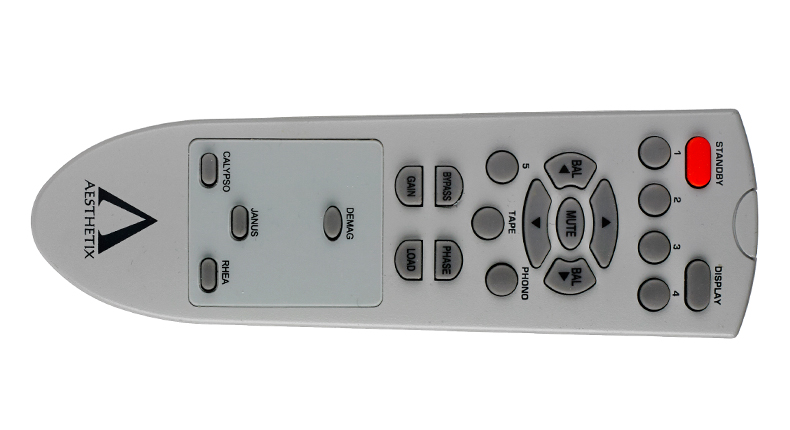
It says much for the talent of this Janus/Atlas pairing that our biggest complaint has to do with the supplied remote control. While perfectly functional, it just isn’t classy enough for a product of this price, and would look far more at home partnering a budget Bluetooth speaker.
Disappointingly, many high-end alternatives tend to have similarly poor remotes. In every other respect we’re impressed with what Aesthetix has achieved.
Preamplifier specification
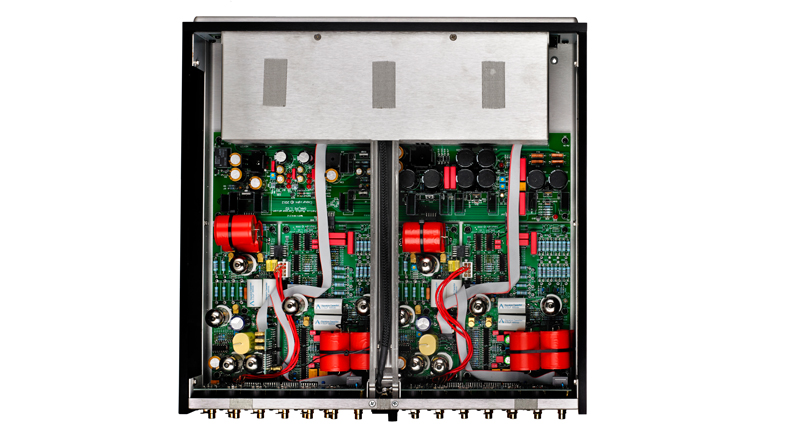
Take a look at the spec sheet and the Janus Signature preamp seems old school: it uses a valve-based circuit and includes a serious phonostage where most rivals have long since gone line-level only. But still, Aesthetix’s execution of this design is very much cutting edge.
It’s the flexibility of the phonostage that grabs our attention. The circuit’s gain can be adjusted from 40dB to 75dB, which means it accommodates both moving-magnet and moving-coil cartridges. Electrical cartridge loading can be set from 75ohms to 47kohms.
Both these parameters can be altered from either the front panel controls or, more conveniently, the remote. Optimising performance is so much easier when any variation in sound can be judged without moving from the listening position.
If you don’t have a record player, Aesthetix makes a line-level version of the Janus called the Calypso. The Signature version of that product retails for £6800. Beyond the Janus’s phonostage there’s an ample supply of line-level inputs and outputs of both the single-ended and balanced variety. We can’t think of a situation where this preamp will be caught short in a high-end set-up.
Take the lid off the preamp – easy to do because it’s held on (securely) by strips of Velcro; you need access to change valves and so on – and you’ll find an immaculately constructed product. The valve-powered circuit is dual mono and fully balanced throughout – these things maximise consistency between channels and keep noise levels low.
Other interesting design touches include zero overall feedback in the circuit and the use of discrete resistor ladder volume control rather than a more conventional potentiometer design. It’s all done to improve dynamics and optimise resolution.
Power amplifier specification
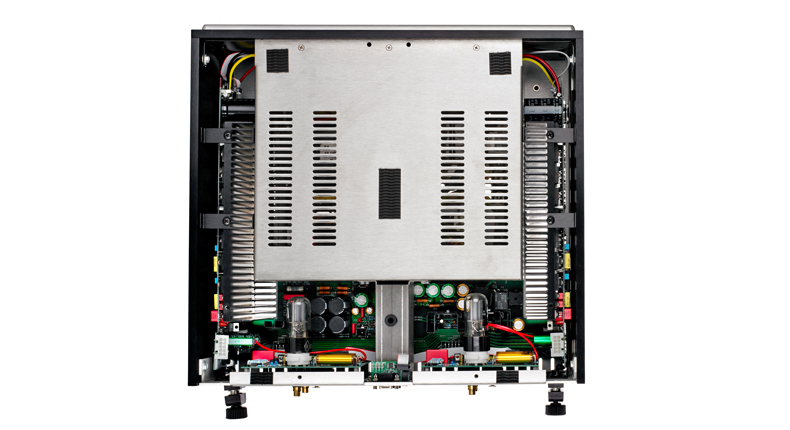
The Atlas Signature power amp is something of a beast. It’s a relatively compact box by price standards but weighs a hefty 32kg. Impressively, its 200W-per-channel power output doubles as impedance halves to 4 ohms – that’s enough to drive any speaker to decent levels, even in a large room.
Inside you’ll find the same care found on the preamp. Everything is neatly assembled and the circuits carefully organised to reduce interference. The Atlas is a hybrid design that couples a valve input stage to a transistor-based output section. As with the preamp, Aesthetix has designed a fully balanced circuit with zero global feedback.
There are more front panel controls here than would be expected on a stereo power amp. You can select inputs – both balanced and single-ended – or whether the display stays on. Intriguingly, there’s an input that connects to a built-in crossover.
The working range of the filter is 40-200Hz and it’s intended for use in stereo systems where there’s a subwoofer or speakers that have powered bass section. It’s an unusual, but neat touch.
Speaker output connections aren’t something we talk about often, but the rhodium-plated ones on the Atlas are a little different. They clamp down on the speaker cable making them ideal for use with spade connectors or bare wire rather than the banana plugs we normally used. They make for a really firm connection, but don’t overdo things.
Performance
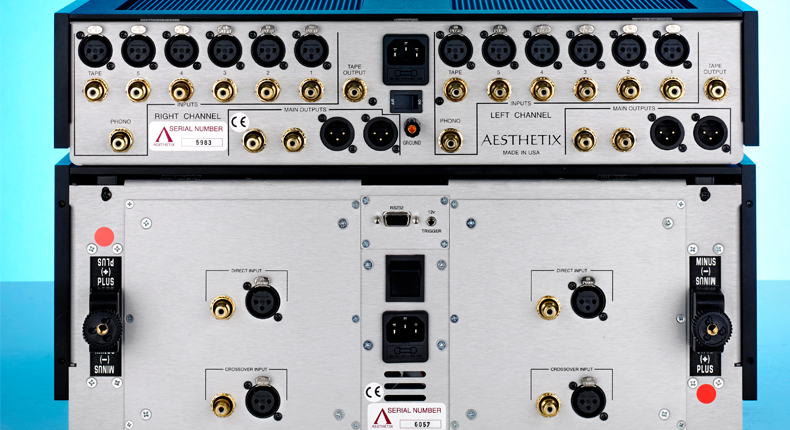
Our review samples of the Janus and Atlas are well-run demo units, so it takes only an hour or so before they start to sing. “Comfortable” is the word we keep coming back to in our initial notes. The Aesthetix sound is smooth, and as refined as you like.
There are no hard edges here, no tendency to harshness, even with less than perfect recordings. Yet the unusual thing here is that these components – the pre and power share the same sonic character – partner this civility with sledgehammer muscle when required. That combination of abilities is rare, even among the priciest of products.
We start off with something small scale, playing Debussy’s Clair de Lune from our reference Naim NDS555PS streamer. This is a piece of music that thrives when fed through a system that has finesse and top-quality resolution. These are qualities this pre/power has in abundance.
We’re struck by the solidity of the sound first, followed by the clean and precise way this amplifier defines the shape of the piano notes. There’s just so much detail on offer, with the Aesthetix delivering a full dose of the harmonic richness of the instrument.
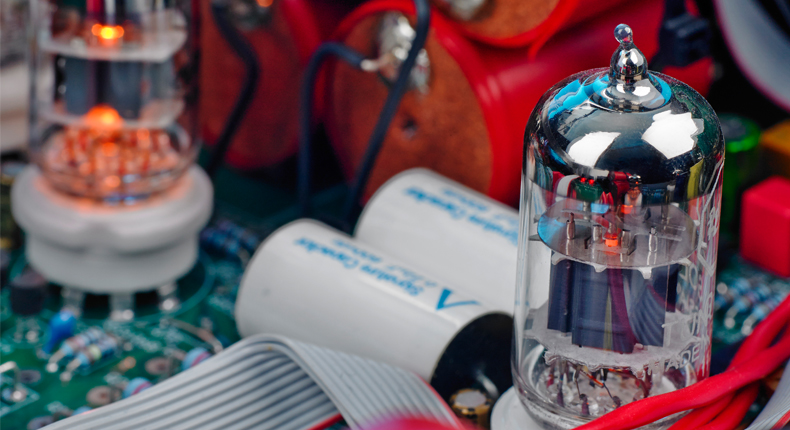
More than that, we love the dynamic flow and the way the amplifier makes perfect musical sense of the piece. It’s enough to take us out of review mode and just sit back, enjoying the music.
We follow-up with Hans Zimmer’s The Dark Knight Rises OST and are taken with the Aesthetix’s scale and authority. There’s an impressive amount of low-end punch and we’re pleased with the pairing’s ability to deliver large-scale dynamic swings with real venom. Stereo imaging is impressive too, with the soundstage nicely layered and precisely populated.
Tonally, this pre/power combination isn’t the most neutral we’ve heard: there’s a hint of sweetness at high frequencies and an element of extra warmth and richness through the midrange and bass frequencies. None of this goes too far however, and the payback is a sonic balance that keeps the worst of recordings listenable while allowing the very best to shine.
Phonostage
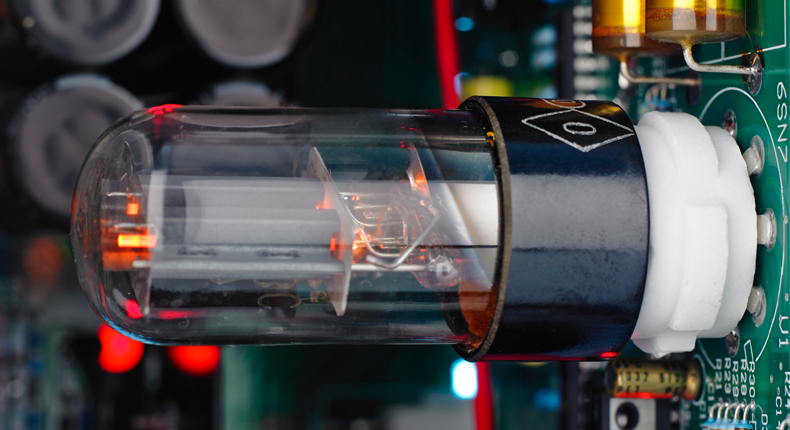
What of that phonostage? It’s terrific, giving little away to the linestage in terms of outright clarity – some feat considering the extra circuit complexity, equalisation and gain required.
We feed our reference Clearaudio Innovation Wood turntable a range of music from Michael Jackson’s Bad and REM’s Automatic for the People to Dukas’s The Sorcerer’s Apprentice, and love what we hear.
There’s hard-charging rhythmic drive when the music demands, plenty of punch, and a class-leading degree of organisation. Vocals are delivered with fluidity and a convincing sense of presence.
This pairing always sounds in control not matter how demanding the music gets. Importantly, that sense of control never goes too far, leaving the energy and sparkle in the music intact. This is a great phonostage, and that it’s built-in a preamp rather than being an outboard unit makes its performance all the more remarkable.
Verdict
We’re really impressed by this pre/power combination. Rarely has high-end amplification been so easy-going while still retaining the transparency the price point demands.
Add that superb phonostage into the equation alongside the excellent build and sensible range of features and it’s clear that Aesthetix has produced one of the standout performers at this price. This is one to take very seriously indeed.
What Hi-Fi?, founded in 1976, is the world's leading independent guide to buying and owning hi-fi and home entertainment products. Our comprehensive tests help you buy the very best for your money, with our advice sections giving you step-by-step information on how to get even more from your music and movies. Everything is tested by our dedicated team of in-house reviewers in our custom-built test rooms in London, Reading and Bath. Our coveted five-star rating and Awards are recognised all over the world as the ultimate seal of approval, so you can buy with absolute confidence.


